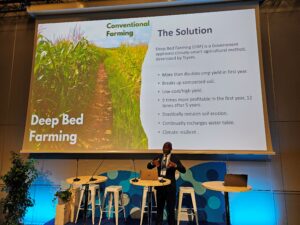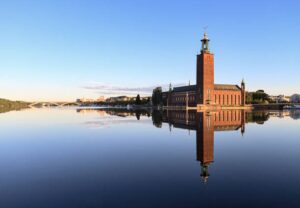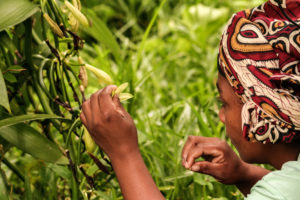Water is our future – but Sweden still lacks a comprehensive strategy


Sweden is in the midst of a water crisis. Farmland is drying up, cloudbursts are contaminating bathing waters, and several municipalities had already imposed irrigation bans – and it’s only May. Yet despite water being vital for our food, health, and safety, Sweden still lacks a national strategy. It’s time to take a systems-wide approach.
This article is a translated version of the original Swedish op-ed published in Dagens Industri on 4 June. It was co-authored by Helena Thybell, Executive Director, SIWI, and John Rune Nielsen, CEO Swedish Environmental Research Institute, IVL.
Sweden’s water infrastructure was built for a climate that no longer exists. The effects of climate change are already clear: fields that first dry out and then flood; more frequent intense rains – which our sewage systems were never designed to handle; and drinking water sources threatened by contamination. At the same time, raw water quality is at risk from pollutants like PFAS, pesticides, and nutrient runoff. It’s not enough to secure water volumes – we must also protect water quality.
Access to water can no longer be taken for granted. Water touches food, energy, health, biodiversity and climate – but is managed in silos. There is no overarching responsibility, no national water strategy, and current investment levels are insufficient. This must change. Sweden needs clear leadership that treats water as a future-defining issue, not just a technical one.
We propose four urgent actions:
1. Adopt a holistic approach to the water cycle.
We need to plan for the entire hydrological system – from rainfall and green water (soil moisture and evapotranspiration) to groundwater and landscape-level flows. This is especially important for rainfed agriculture, forests and ecosystems. Reuse of treated wastewater must be part of the solution. Sweden also needs stronger data systems and monitoring to support long-term decision-making.
2. Clarify responsibilities and coordination.
Sweden currently has five water authorities that coordinate management under the EU Water Framework Directive – an important mandate, but with limited scope and visibility. Meanwhile, responsibility for water remains fragmented across agencies, sectors and governance levels. To meet the impacts of climate change across the water cycle, we need stronger national leadership. This doesn’t require creating new agencies – but existing mandates must be aligned, and coordination must be prioritised.
3. Prioritise nature-based solutions.
Rather than building more concrete, we must protect and restore wetlands and sustainably manage forests and agricultural land to retain water in the landscape. These solutions are cheaper, more resilient, and benefit biodiversity. They also reduce infrastructure costs, improve microclimates and deliver new ecosystem services.
4. Create incentives to make every drop count.
Today, there are few incentives to retain water in the landscape, even though it’s critical for addressing both drought and flooding. While some rules exist – such as stormwater management requirements for new urban developments – broader policy tools are lacking to promote delayed runoff, rainwater harvesting or protection of aquifers. Forestry and agriculture can play a key role but need the right support systems to do so. Private property owners should also be encouraged to participate through simple measures such as rain barrels and green roofs.
“Water is not just a resource – it’s a foundation for food, safety and climate resilience. Sweden needs a national strategy to manage the water challenges of today and tomorrow.”
At the same time, the EU is taking action. The European Commission has just presented a new water strategy to strengthen resilience, protect raw water sources and adapt society to a changing climate. This is a crucial initiative – but without a corresponding national strategy, Sweden risks falling behind both in pace and in leadership.
With COP30 in Brazil approaching, Sweden has an opportunity to show leadership on a new water agenda for a changing climate. But that leadership must begin at home. We need to shift from crisis response to forward-looking planning. From fragmented mandates to a systemic approach. Water must be given a central role in Sweden’s climate adaptation strategy and be linked to agriculture, energy and land use planning.
This is not just about water. It’s about food on the table, safe communities, public health and our future living environment. Sweden has the knowledge, the tools, and the expertise. But we no longer have time to wait.
Helena Thybell
Executive Director, Stockholm International Water Institute (SIWI)
John Rune Nielsen
CEO, Swedish Environmental Research Institute (IVL)
In today’s Swedish daily Dagens Industri, Helena Thybell (SIWI) and John Rune Nielsen (IVL) call for a national strategy to meet growing water challenges driven by climate change. This call to action coincides with the launch of the EU Water Resilience Initiative – a crucial moment for aligning European ambition with national leadership.






